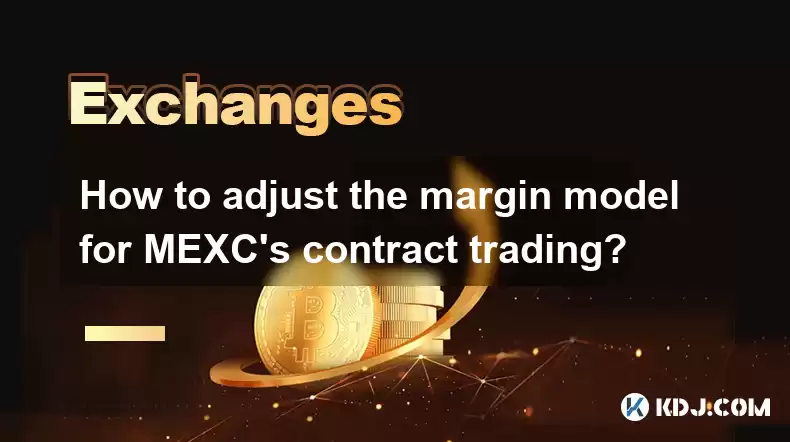-
 Bitcoin
Bitcoin $117500
2.15% -
 Ethereum
Ethereum $3911
6.19% -
 XRP
XRP $3.316
10.79% -
 Tether USDt
Tether USDt $1.000
0.01% -
 BNB
BNB $787.2
2.24% -
 Solana
Solana $175.2
4.15% -
 USDC
USDC $0.9999
0.00% -
 Dogecoin
Dogecoin $0.2225
8.40% -
 TRON
TRON $0.3383
0.28% -
 Cardano
Cardano $0.7868
6.02% -
 Stellar
Stellar $0.4382
9.34% -
 Hyperliquid
Hyperliquid $40.92
7.56% -
 Sui
Sui $3.764
7.63% -
 Chainlink
Chainlink $18.48
10.66% -
 Bitcoin Cash
Bitcoin Cash $582.1
1.88% -
 Hedera
Hedera $0.2601
6.30% -
 Avalanche
Avalanche $23.33
4.94% -
 Ethena USDe
Ethena USDe $1.001
0.02% -
 Litecoin
Litecoin $122.3
2.04% -
 UNUS SED LEO
UNUS SED LEO $8.969
-0.27% -
 Toncoin
Toncoin $3.339
0.86% -
 Shiba Inu
Shiba Inu $0.00001287
4.30% -
 Uniswap
Uniswap $10.43
7.38% -
 Polkadot
Polkadot $3.861
5.08% -
 Dai
Dai $1.000
0.02% -
 Bitget Token
Bitget Token $4.513
3.41% -
 Monero
Monero $267.7
-6.18% -
 Cronos
Cronos $0.1499
4.14% -
 Pepe
Pepe $0.00001110
5.15% -
 Aave
Aave $284.9
8.28%
How to adjust the margin model for MEXC's contract trading?
Adjusting MEXC's contract trading margin model between Cross and Isolated Margin impacts how collateral is used and how profits/losses are calculated, affecting your trading strategy.
Apr 03, 2025 at 04:49 pm

Title: How to Adjust the Margin Model for MEXC's Contract Trading?
Adjusting the margin model for MEXC's contract trading is a crucial aspect of managing your trading strategy effectively. The margin model determines how your collateral is utilized and how profits and losses are calculated. In this article, we will guide you through the process of adjusting the margin model on MEXC's platform, ensuring you understand every step and detail required to make these adjustments.
Understanding Margin Models on MEXC
Before diving into the adjustment process, it's essential to understand the two primary margin models available on MEXC: Cross Margin and Isolated Margin. Cross Margin uses all the available balance in your account as collateral for your open positions, spreading the risk across all your trades. On the other hand, Isolated Margin allocates a specific amount of collateral to each position, isolating the risk to that particular trade. Choosing the right margin model depends on your risk management strategy and trading goals.
Accessing the Contract Trading Interface
To begin adjusting your margin model, you first need to access the contract trading interface on MEXC. Here are the steps to do so:
- Log into your MEXC account.
- Navigate to the 'Futures' section from the main menu at the top of the page.
- Select the specific futures contract you want to trade. This will take you to the trading interface for that contract.
Once you are on the trading interface, you will see various options and settings related to your trading activities, including the margin model settings.
Adjusting the Margin Model
Adjusting the margin model on MEXC is a straightforward process. Here's how you can do it:
- Locate the 'Position' tab on the trading interface. This tab shows your current open positions and allows you to manage them.
- Click on the position for which you want to adjust the margin model.
- Find the 'Margin Mode' button. This button will be labeled either 'Cross' or 'Isolated', indicating the current margin model in use.
- Click on the 'Margin Mode' button to switch between Cross Margin and Isolated Margin. A confirmation dialog may appear; confirm your choice to apply the change.
Setting Up Isolated Margin
If you choose to use the Isolated Margin model, you may need to set the initial margin amount for each position. Here's how to do it:
- After switching to Isolated Margin, you will see an option to set the 'Initial Margin'.
- Enter the desired amount of collateral you want to allocate to the position. This amount should be within the limits set by MEXC for the specific contract.
- Confirm the initial margin amount. Once set, this amount will be used as the collateral for the position, and any profits or losses will affect only this allocated amount.
Managing Multiple Positions with Different Margin Models
MEXC allows you to manage multiple positions with different margin models simultaneously. This flexibility can be crucial for diversifying your risk management strategy. Here's how you can manage multiple positions:
- Open the 'Position' tab to view all your current positions.
- Select the position you want to adjust.
- Follow the steps mentioned earlier to switch the margin model for each position individually.
- Monitor your positions closely to ensure that the margin models align with your overall trading strategy.
Adjusting Margin for Existing Positions
If you have existing positions and want to adjust the margin model, you can do so without closing the positions. Here's how:
- Go to the 'Position' tab and select the position you want to adjust.
- Click on the 'Margin Mode' button to switch between Cross and Isolated Margin.
- If switching to Isolated Margin, you may need to set the initial margin amount as described earlier.
- Confirm the changes. The new margin model will apply to the existing position immediately.
Understanding the Impact of Margin Model Changes
Changing the margin model can have significant impacts on your trading. When switching from Cross to Isolated Margin, you are limiting the risk to the allocated collateral, which can protect your overall account balance but may also limit potential gains. Conversely, switching from Isolated to Cross Margin spreads the risk across your entire account, potentially increasing both gains and losses.
Frequently Asked Questions
Q: Can I switch the margin model multiple times during a trading session?
A: Yes, you can switch the margin model multiple times during a trading session. However, be aware that frequent changes can affect your trading strategy and risk management.
Q: What happens if I don't have enough collateral when switching to Isolated Margin?
A: If you do not have enough collateral to meet the initial margin requirement when switching to Isolated Margin, the platform will not allow the switch. You will need to add more collateral to your account or adjust the initial margin amount to a level that your account can support.
Q: Does changing the margin model affect my open orders?
A: Changing the margin model does not directly affect your open orders. However, it can impact how your positions are managed and how profits and losses are calculated, which may indirectly influence your trading decisions.
Q: Can I use both Cross and Isolated Margin models for different positions at the same time?
A: Yes, MEXC allows you to use both Cross and Isolated Margin models for different positions simultaneously. This flexibility enables you to tailor your risk management strategy to each position individually.
Disclaimer:info@kdj.com
The information provided is not trading advice. kdj.com does not assume any responsibility for any investments made based on the information provided in this article. Cryptocurrencies are highly volatile and it is highly recommended that you invest with caution after thorough research!
If you believe that the content used on this website infringes your copyright, please contact us immediately (info@kdj.com) and we will delete it promptly.
- Ethereum, Staking Yields, and DeFi Exposure: A New Era for Investors?
- 2025-08-08 15:10:12
- Unilabs Pumps MIA, Binance Coin Bouncing Back, and Ethereum's Bearish Blues
- 2025-08-08 15:10:12
- Ethereum's Wyckoff Markup and Market Rotation: A New Era?
- 2025-08-08 15:30:12
- Ethereum, Vitalik Buterin, and the Overleveraged Game: A Balancing Act
- 2025-08-08 15:30:12
- Ethereum, Corporate Treasuries, and Vitalik Buterin: A New Era for ETH?
- 2025-08-08 15:36:08
- BNB Price, Binance Staking, and SEC Concerns: What's the Deal?
- 2025-08-08 15:36:08
Related knowledge

How to use margin trading on Poloniex
Aug 08,2025 at 09:50am
Understanding Margin Trading on Poloniex

How to use advanced trading on Gemini
Aug 08,2025 at 04:07am
Understanding Advanced Trading on GeminiAdvanced trading on Gemini refers to a suite of tools and order types designed for experienced traders who wan...

How to deposit USD on Bitstamp
Aug 07,2025 at 05:18pm
Understanding Bitstamp and USD DepositsBitstamp is one of the longest-standing cryptocurrency exchanges in the industry, offering users the ability to...

How to use the Kraken Pro interface
Aug 08,2025 at 09:57am
Understanding the Kraken Pro Interface LayoutThe Kraken Pro interface is designed for both novice and experienced traders seeking a streamlined experi...

How to find my transaction ID on Gemini
Aug 08,2025 at 12:50am
Understanding the Transaction ID in Cryptocurrency ExchangesA transaction ID (TXID) is a unique alphanumeric string that identifies a specific transfe...

How to calculate crypto taxes from Binance
Aug 08,2025 at 07:56am
Understanding Cryptocurrency Taxation on BinanceCalculating crypto taxes from Binance requires a clear understanding of how tax authorities classify d...

How to use margin trading on Poloniex
Aug 08,2025 at 09:50am
Understanding Margin Trading on Poloniex

How to use advanced trading on Gemini
Aug 08,2025 at 04:07am
Understanding Advanced Trading on GeminiAdvanced trading on Gemini refers to a suite of tools and order types designed for experienced traders who wan...

How to deposit USD on Bitstamp
Aug 07,2025 at 05:18pm
Understanding Bitstamp and USD DepositsBitstamp is one of the longest-standing cryptocurrency exchanges in the industry, offering users the ability to...

How to use the Kraken Pro interface
Aug 08,2025 at 09:57am
Understanding the Kraken Pro Interface LayoutThe Kraken Pro interface is designed for both novice and experienced traders seeking a streamlined experi...

How to find my transaction ID on Gemini
Aug 08,2025 at 12:50am
Understanding the Transaction ID in Cryptocurrency ExchangesA transaction ID (TXID) is a unique alphanumeric string that identifies a specific transfe...

How to calculate crypto taxes from Binance
Aug 08,2025 at 07:56am
Understanding Cryptocurrency Taxation on BinanceCalculating crypto taxes from Binance requires a clear understanding of how tax authorities classify d...
See all articles

























































































